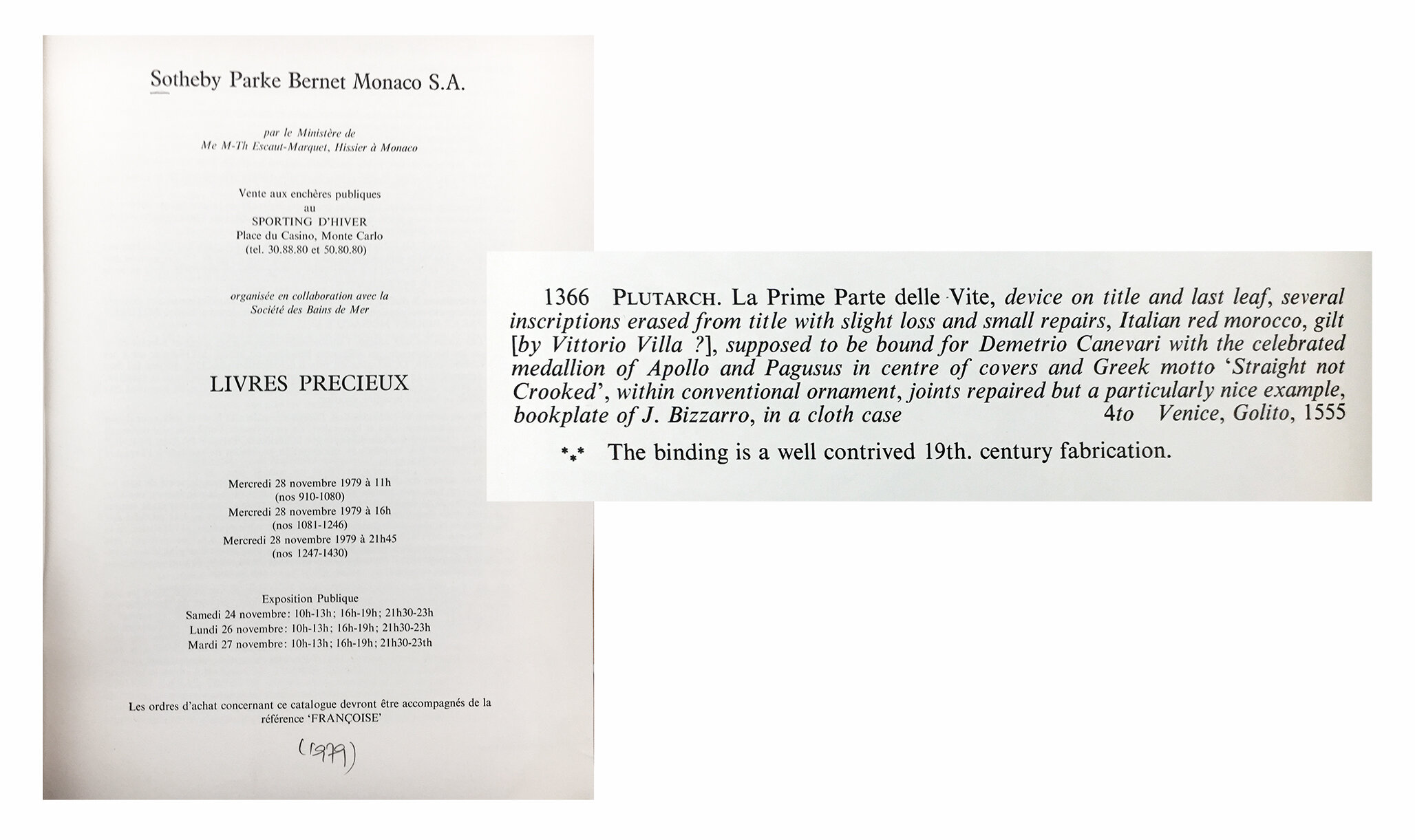The strange effect of a forged plaquette: A further note on a pair of Renaissance bindings
In The strange case of a genuine Renaissance Venetian binding and the modern allure of myth, we presented the intriguing story of a first edition of Ludovico Domenichi’s Italian translation of Plutarch’s two-volume Vitae. The two volumes were issued in 1555 by the Venetian printer Gabriele Giolito de’ Ferrari and sumptuously bound around that time by the famous Flemish craftsman Anthon Lodewijk or Lowies, who was active in Venice between 1553 and 1557 (see the complete description of both volumes here).
Plutarchus, La prima [- seconda] parte delle Vite... nuouamente da M. Lodouico Domenichi tradotte, Venice, Gabriele Giolito de’ Ferrari and Brothers, 1555, vol. 1 (spine) and vol. 2 (cover).
See the full description of these volumes here.
What makes the story particularly curious relates to the fact that the volumes were separated by the end of the nineteenth or early twentieth century and re-emerged on the market in separate hands, with the first volume now bearing the famous “Apollo and Pegasus” plaquette. In 1975, Hobson definitively associated the mark with the wealthy patrician and banker from Genoa Giovanni Battista Grimaldi (ca. 1524-ca. 1612), but prior to that the uncertain identity of the patron only added to the allure of the enigmatic plaquette and the exquisitely rare books it adorned. In the period they were apart, a certain unscrupulous figure evidently took it upon himself to “embellish” the first volume with the precious mark, so highly sought after by collectors.
While the full story is recounted in the earlier post, we mention here one more important part of the volume’s story, for that “embellishment” also concealed the truth of Lodewijk’s work. In fact, when the first volume was offered for sale as part of the Cartier Library in 1979 (sale Sotheby's Monaco, 28 November 1979, lot 1366), the entire binding was regarded as a “well contrived 19th. century fabrication”.
Hobson had recently published his Apollo and Pegasus: An enquiry into the formation and dispersal of a Renaissance Library (1975), where Grimaldi’s identity was clarified. It is further owing to Hobson’s expertise that the binding’s authenticity as a genuine Lodewijk binding with a forged plaquette was finally revealed in his masterful Renaissance Book Collecting of 1999, the truth finally coming to light.
![Plutarchus, La prima [- seconda] parte delle Vite... nuouamente da M. Lodouico Domenichi tradotte, Venice, Gabriele Giolito de’ Ferrari and Brothers, 1555, vol. 1 (spine) and vol. 2 (cover). See the full description of these volumes here.](https://images.squarespace-cdn.com/content/v1/5c748f03aadd346d92d68bd1/1625676168727-CZF7UY9CXMS5WSHJ0O06/plutarch+two+bindings.jpeg)



